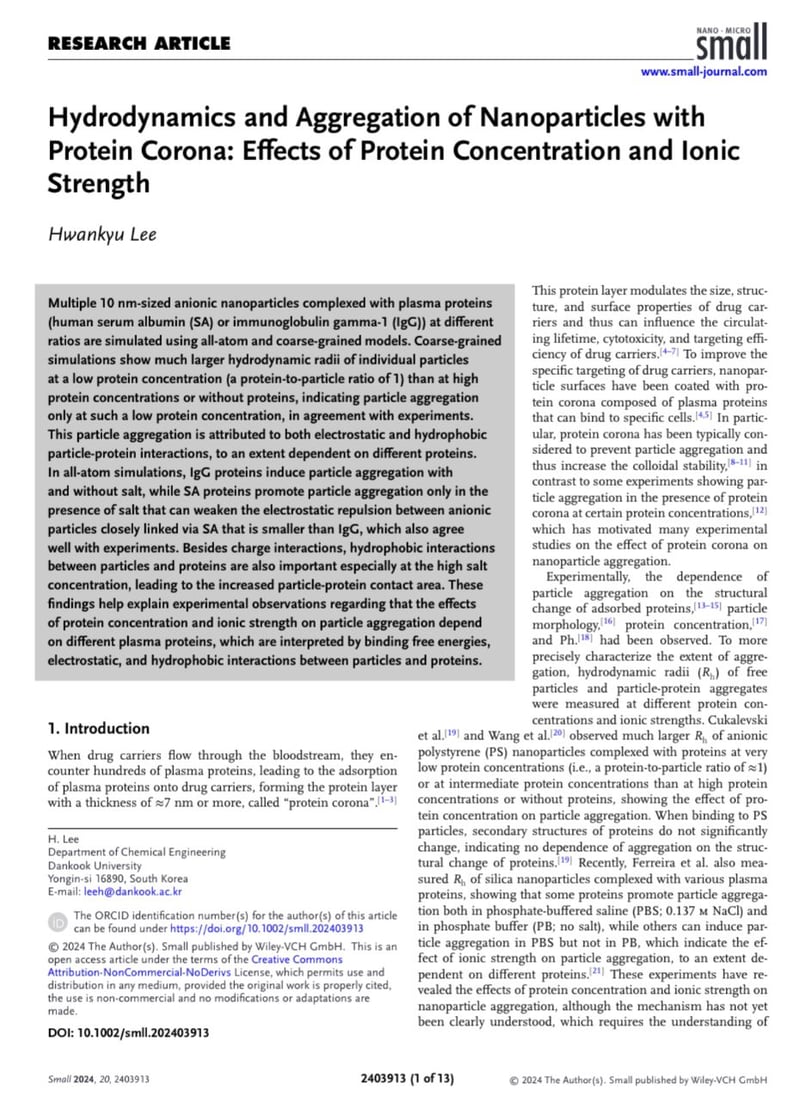Hydrodynamics and Aggregation of Nanoparticles withProtein Corona: Effects of Protein Concentration and Ionic Strength
In this paper of the day, the author emphasizes the effect of ionic strength and protein content on the aggregation behavior of nanoparticles with a protein corona. These models adopted by the researchers were the all-atom and coarse-grained models as tools in studying how two types of plasma proteins human serum albumin and immunoglobulin G interact with nanoparticles and how this makes them move through fluids. The study identified that the clumping of nanoparticle is a function of a great number of proteins and the clumping becomes more frequent in case the protein is low. At the final stage, the study found out that the ionic strength of the fluid mostly determined the flocculation between the particles and proteins. This would explain why the interactions between nanoparticles and proteins are complex; here, in particular, it is electrostatic as well as hydrophobic forces. These results have great implications in understanding how nanoparticles behave inside a living system and better ways of drug delivery.


